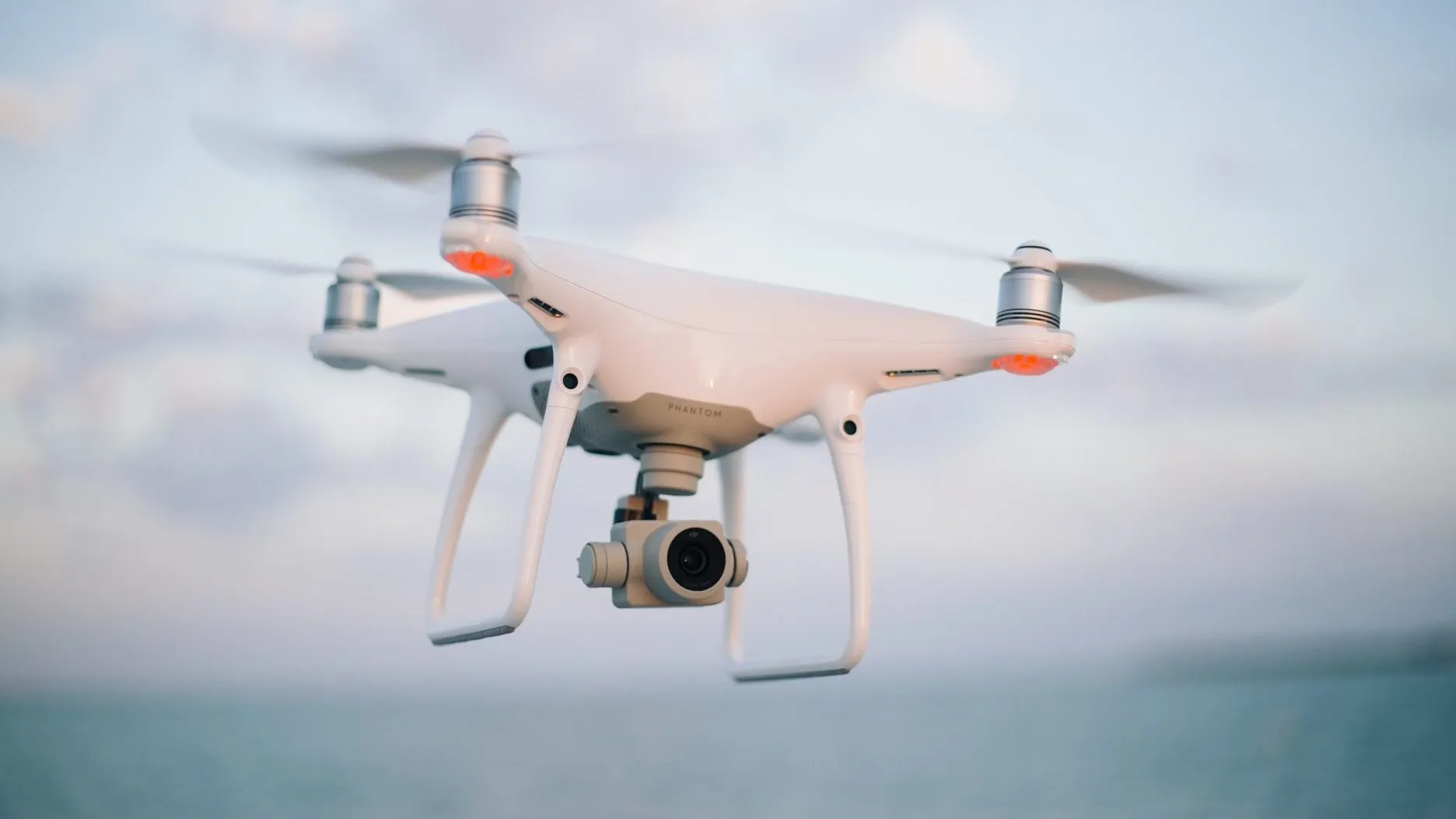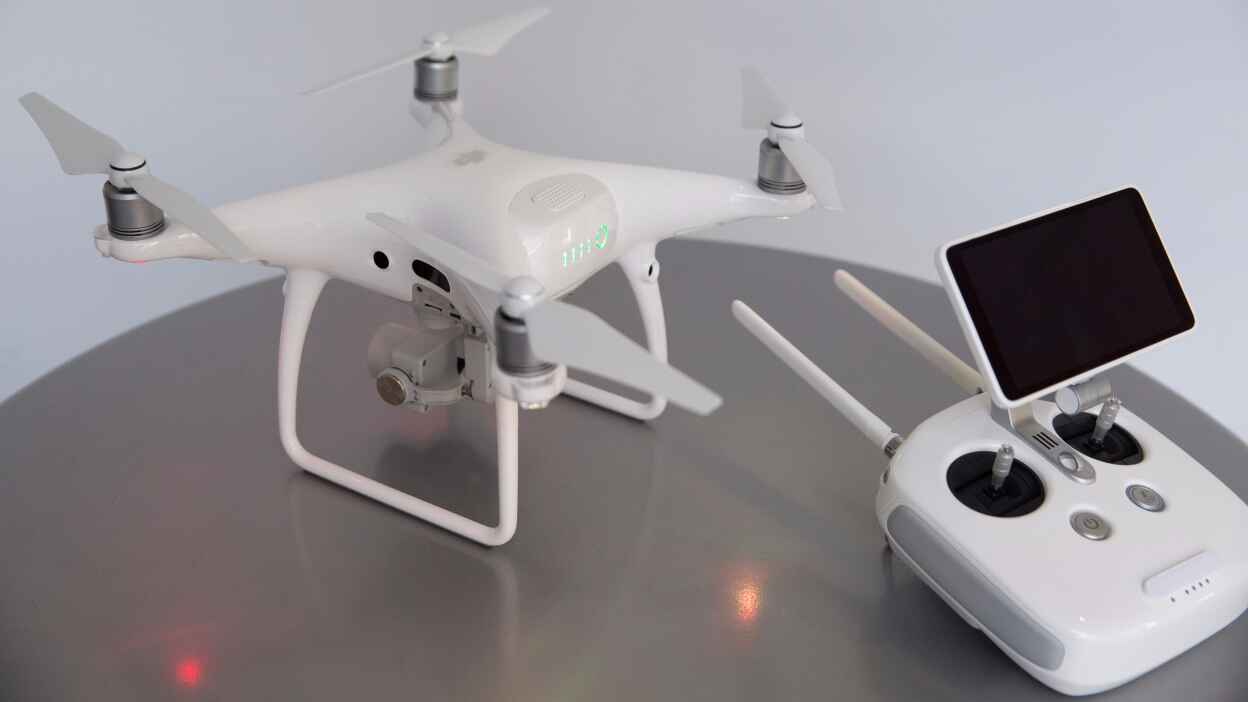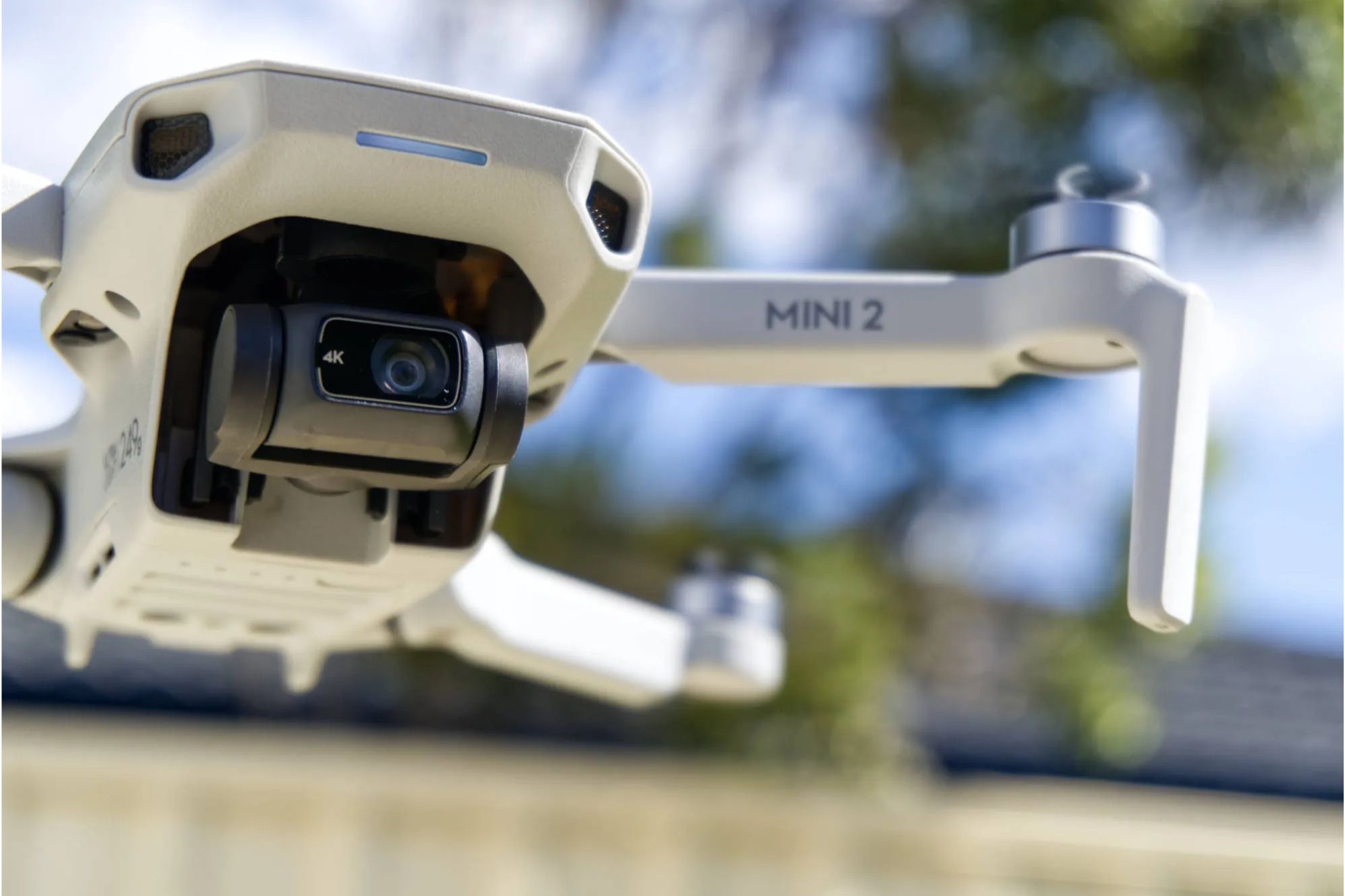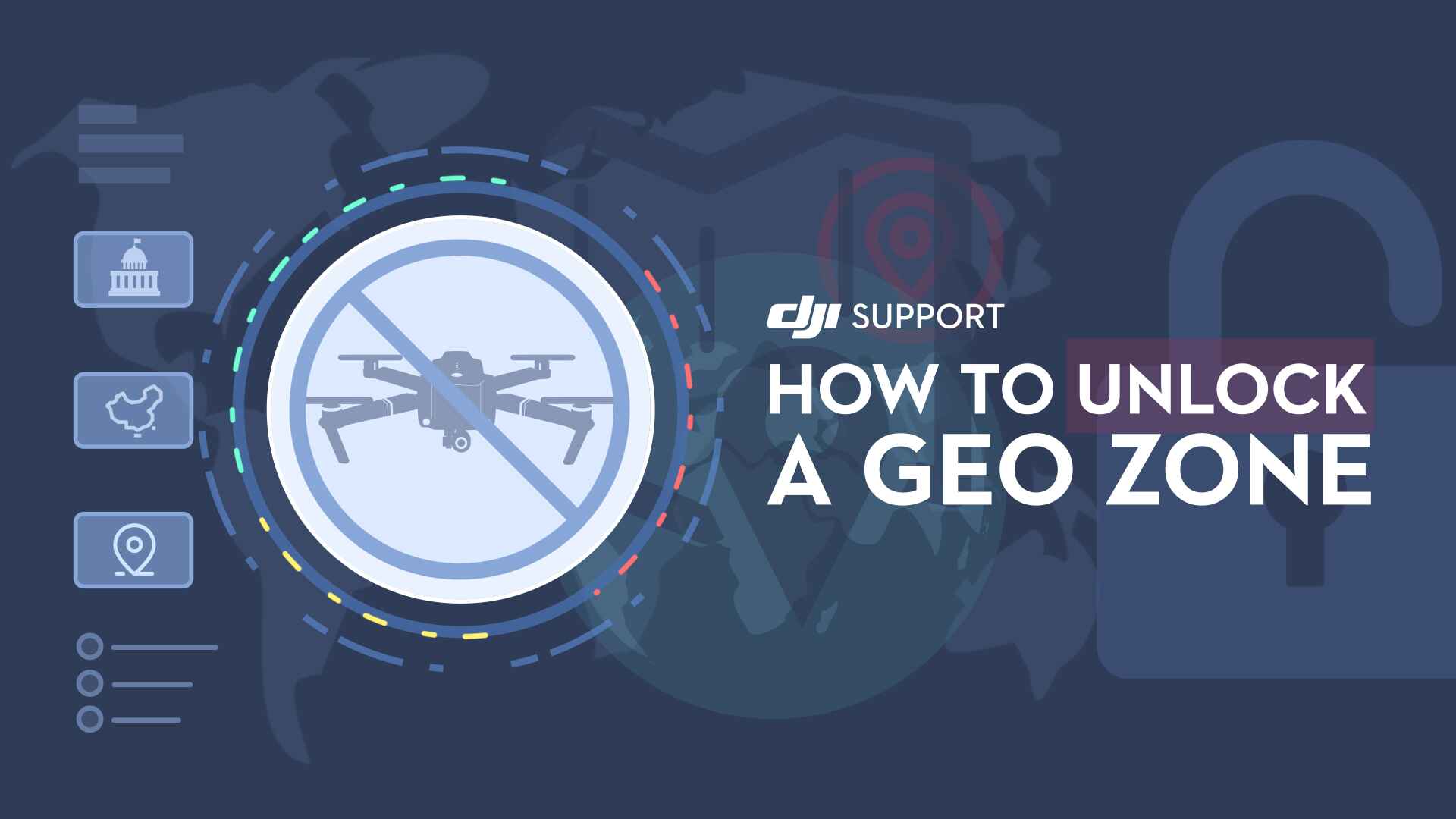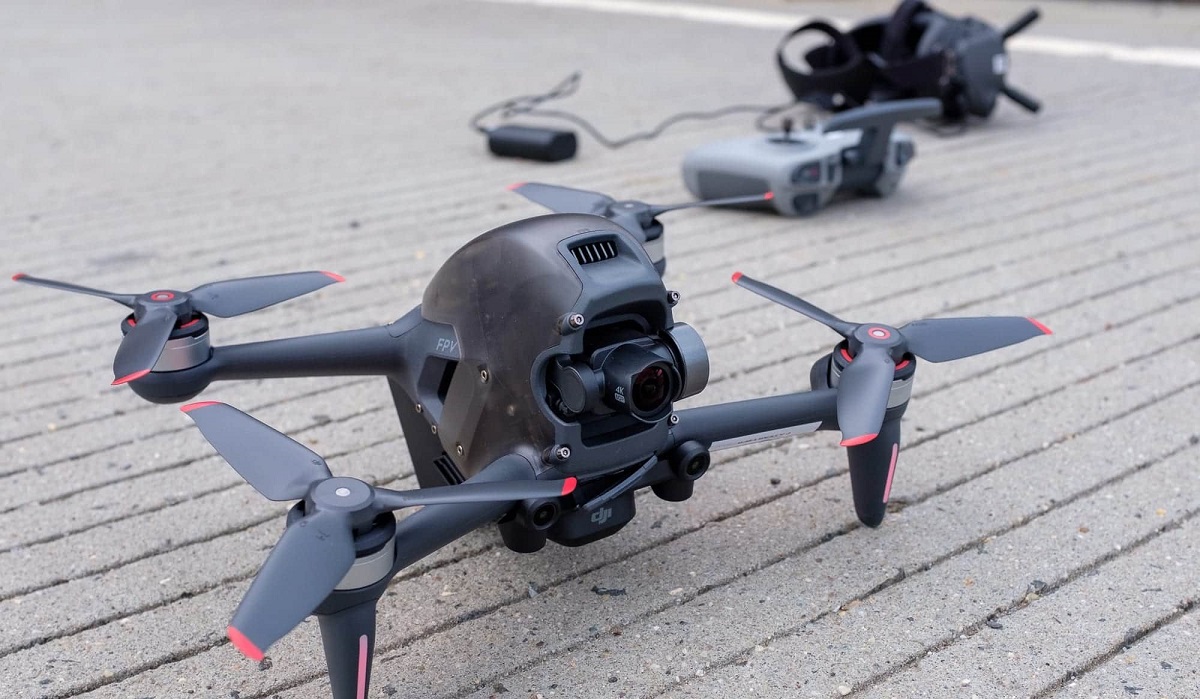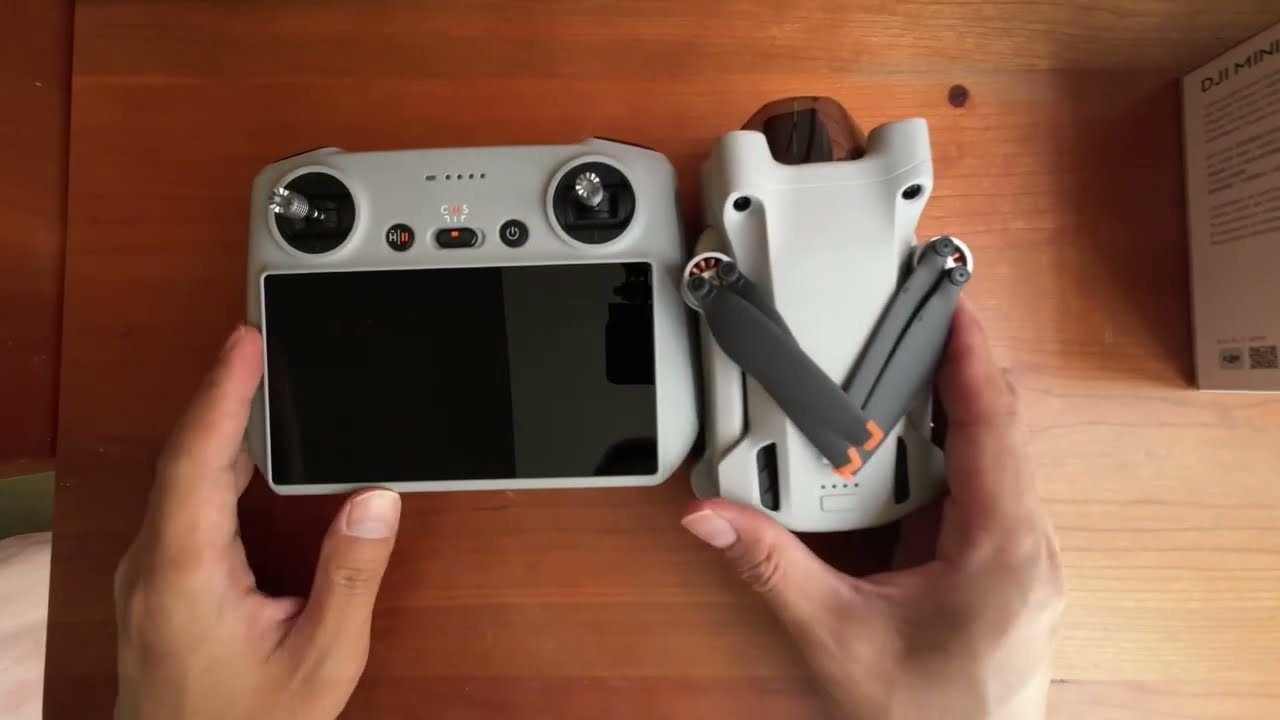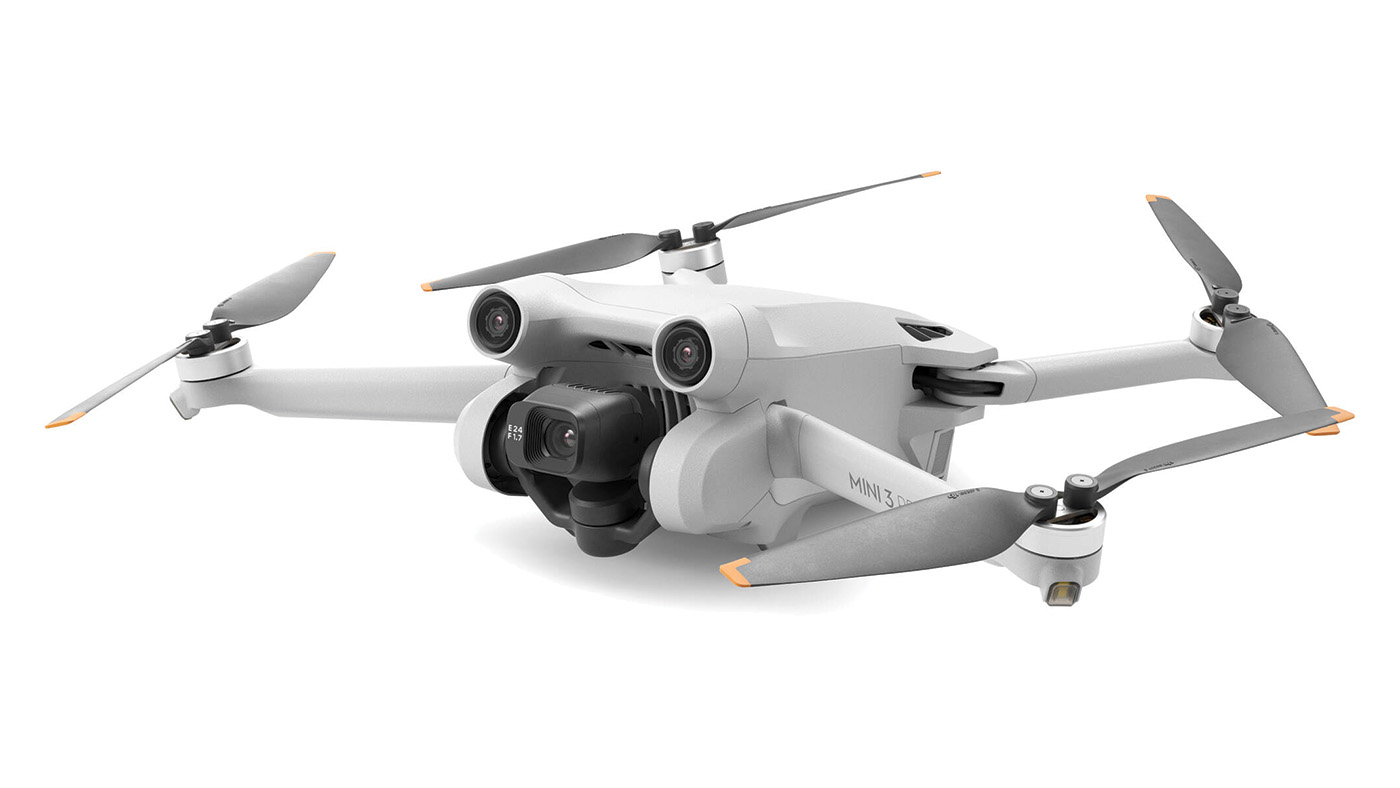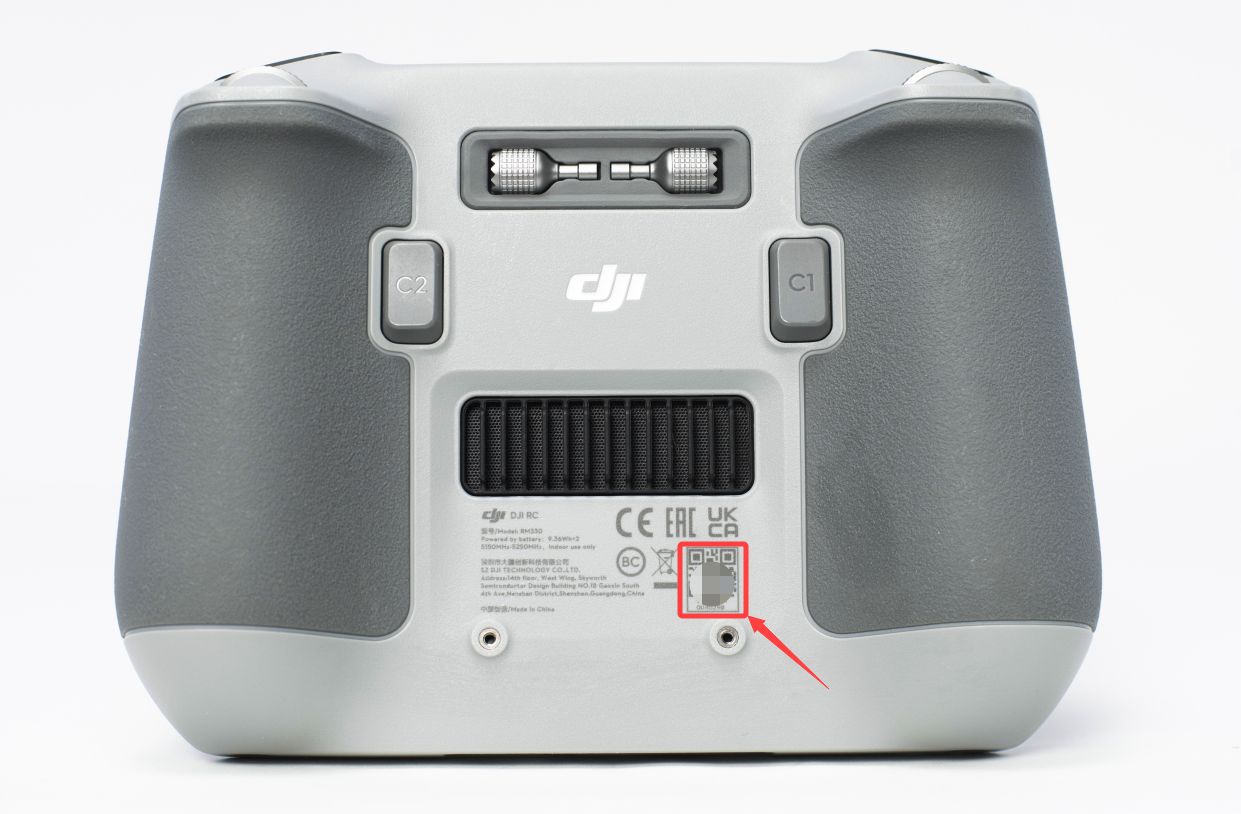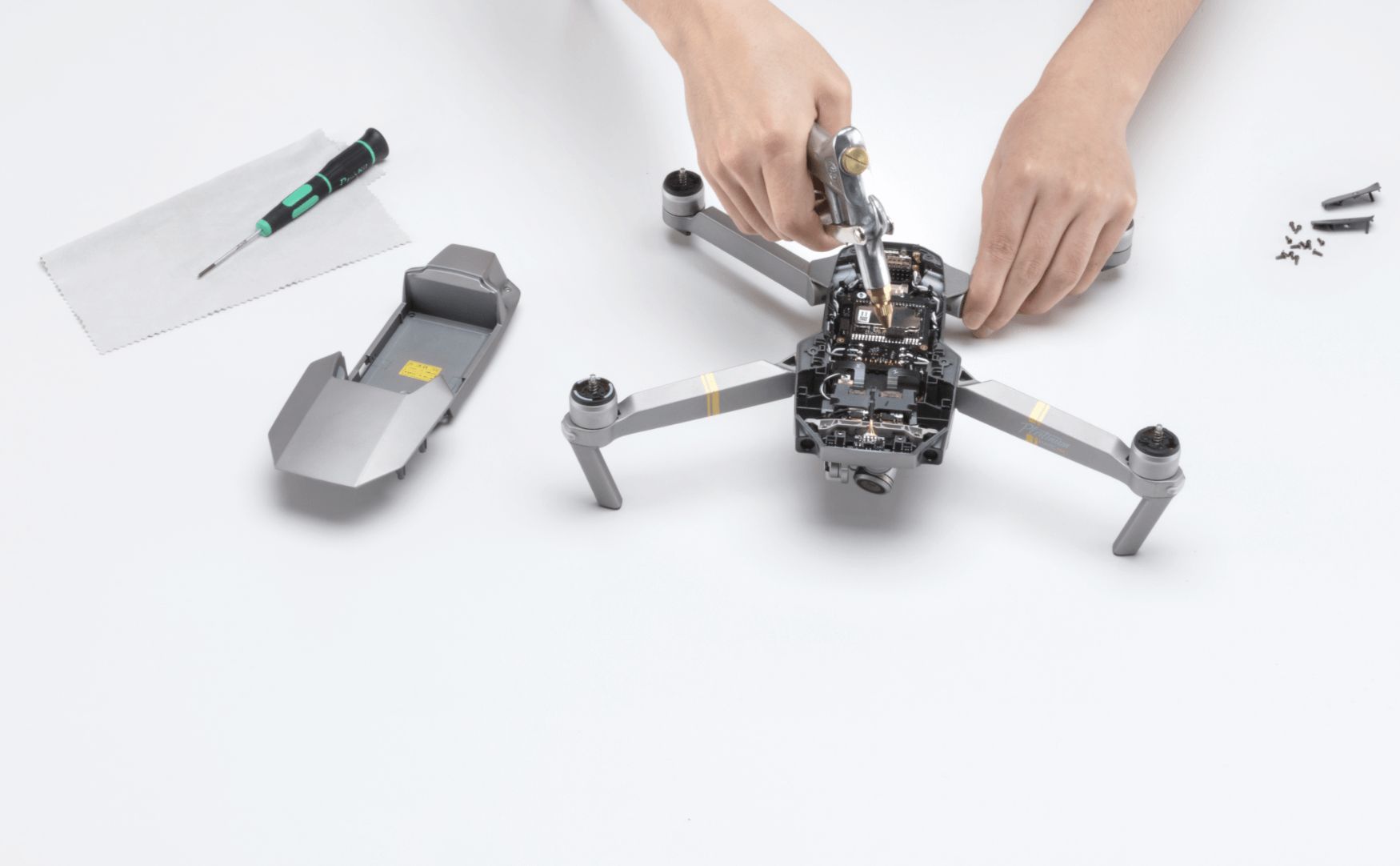Introduction
Welcome to the world of DJI drones! As an owner of a DJI drone, you may be wondering if you need to register your drone with the appropriate authorities. The process of registering your drone is essential to ensure compliance with regulations and promote safe and responsible drone operation. In this article, we will guide you through the steps required to register your DJI drone.
Drone registration requirements vary from country to country, so it’s crucial to familiarize yourself with the specific regulations in your area. In the United States, the Federal Aviation Administration (FAA) has established rules for drone registration to promote the safe integration of drones into the national airspace. Failure to comply with these regulations can result in penalties and potential legal consequences.
Before proceeding with the registration process, it’s important to determine if your DJI drone falls under the category that requires registration. In the United States, recreational drones weighing between 0.55 and 55 pounds must be registered with the FAA. If your drone is intended for commercial use, regardless of its weight, registration is mandatory.
Once you’ve determined the need for registration, you’ll need to choose the appropriate method to complete the process. The FAA provides two registration options, and we will discuss both in detail. It’s essential to note that registration is an online process, and you will need access to a computer or mobile device with an internet connection.
Registering your DJI drone serves multiple purposes. It helps authorities identify you as the responsible owner of the drone, promotes accountability, and aids in returning lost or stolen drones. Additionally, it provides a platform for authorities to communicate critical safety information and updates, ensuring that drone operators stay informed and compliant with evolving regulations.
In the following sections, we will guide you step-by-step through the process of registering your DJI drone. Whether you opt for the registration through the FAA’s DroneZone website or choose the exception for recreational drones, this guide will provide all the necessary information and instructions to successfully complete the registration process.
Step 1: Determine if registration is required
Before embarking on the registration process, it’s important to determine whether or not your DJI drone requires registration. The registration requirements may vary depending on your location and the purpose for which you intend to use your drone. In many countries, including the United States, registration is mandatory for drones meeting specific criteria.
In the United States, the Federal Aviation Administration (FAA) requires drone registration for recreational drones weighing between 0.55 and 55 pounds. This weight range covers a wide variety of popular DJI drone models, such as the Mavic Mini, Mavic Air, and Phantom series. However, it’s important to note that drones weighing less than 0.55 pounds or more than 55 pounds may have different registration requirements or exemptions.
It’s essential to assess the purpose of your drone operations to determine the appropriate registration category. If you plan to use your DJI drone for recreational purposes, registration is required. Recreational drone activities include hobbies, personal enjoyment, and flying for non-commercial purposes.
If, on the other hand, you intend to use your DJI drone for commercial purposes, such as aerial photography or videography, land surveying, or any other activity where you receive compensation for your drone operations, registration is mandatory regardless of the drone’s weight.
While it’s crucial to comply with drone registration requirements, it’s equally important to familiarize yourself with any additional regulations imposed on drone operators. The FAA, for example, mandates that individuals operating drones for recreational purposes must follow the agency’s safety guidelines and fly within established limits to ensure the safety of both the drone and the surrounding airspace.
By taking the time to determine if your DJI drone requires registration, you are ensuring that you are operating within the bounds of the law and promoting a culture of responsible drone use. This step sets the foundation for a safe and enjoyable drone flying experience.
Step 2: Choose the appropriate registration method
Once you have confirmed that your DJI drone requires registration, it’s time to choose the appropriate method to complete the registration process. In the United States, the Federal Aviation Administration (FAA) offers two registration options: registration through the FAA’s DroneZone website or registration under the exception for recreational drones.
The first option, registration through the FAA’s DroneZone website, is the most common method for drone registration. It is suitable for both recreational and commercial drone operators. This online process allows you to complete your registration quickly and conveniently.
To register through the FAA’s DroneZone website, you will need to create an account using a valid email address. Once you have created an account, you can proceed with providing the necessary information, such as your personal details, contact information, and drone specifications. You will also be required to pay the registration fee, which is currently set at $5 for a three-year registration period.
For recreational drone operators, the second option is registering under the exception for recreational drones. This exemption is available for drones solely used for recreational purposes and weighing between 0.55 and 55 pounds. By selecting this option, you are exempt from the registration fee.
To register under the exception for recreational drones, you will need to provide your name, physical mailing address, and an email address. Additionally, you will need to affirm that you understand and will comply with the FAA’s safety guidelines for operating recreational drones.
It’s important to choose the method that aligns with the purpose of your drone operations. If you plan to conduct both recreational and commercial activities, you should opt for registration through the FAA’s DroneZone website. This way, you can ensure compliance across all your drone operations.
By selecting the appropriate registration method, you are taking a significant step towards legal compliance and responsible drone ownership. Make sure to gather all the necessary information and choose the method that best suits your needs.
Option 1: Registration through FAA’s DroneZone website
Registering your DJI drone through the Federal Aviation Administration’s (FAA) DroneZone website is a straightforward and convenient method that applies to both recreational and commercial drone operators. This process allows you to complete your registration online, ensuring compliance with the FAA’s guidelines. Here’s how you can register your DJI drone through the FAA’s DroneZone website:
1. Create an account: To begin the registration process, you will need to create an account on the FAA’s DroneZone website. Simply provide a valid email address and follow the instructions to set up your account.
2. Provide personal information: Once your account is created, you will be prompted to provide your personal information, including your name, address, and contact details. It’s important to ensure that all the information you provide is accurate and up to date.
3. Enter drone details: Next, you will need to provide specific details about your DJI drone. This includes information such as the manufacturer, make, model, and serial number of your drone. If you are unsure about the serial number, check the product documentation or the drone itself for the necessary information.
4. Pay the registration fee: As part of the registration process, you will be required to pay a fee. The current registration fee for recreational and commercial drone operators is $5 for a three-year registration period. Keep in mind that this fee may be subject to change, so it’s always a good idea to verify the current fee before proceeding with the registration.
5. Obtain your registration number: Once you have completed the registration process and successfully paid the fee, you will receive a unique registration number for your DJI drone. This number serves as proof of registration and must be affixed to your drone in a visible location. The FAA requires the registration number to be legible and easily accessible, ensuring that authorities can identify the registered owner of the drone.
Remember, it’s essential to follow all the guidelines provided by the FAA throughout the registration process to ensure a seamless experience. By registering your DJI drone through the FAA’s DroneZone website, you are demonstrating your commitment to safe and responsible drone operation and complying with regulatory requirements.
Once you have obtained your registration number, you can move on to the next step in the process of legally and responsibly operating your DJI drone.
Option 2: Registering under the exception for recreational drones
If you are a recreational drone operator using your DJI drone solely for non-commercial purposes, you have the option to register your drone under the exception for recreational drones. This alternative method allows you to fulfill the registration requirement without having to pay the registration fee. Here’s how you can register your DJI drone under the exception for recreational drones:
1. Provide personal information: To initiate the registration process, you will need to provide your name, physical mailing address, and valid email address. Ensure that the information you provide is accurate and up to date.
2. Agree to the terms: As part of the registration process, you will need to affirm that you understand and will comply with the Federal Aviation Administration’s (FAA) safety guidelines for recreational drone operators. This includes following the altitude restrictions, avoiding flying near airports or other restricted areas, and respecting the privacy of others.
3. Obtain your registration number: Once you have completed the registration process, you will receive a unique registration number for your DJI drone. This number serves as proof of registration and must be affixed to your drone in a visible location. While it is not compulsory to place the registration number on your drone, it is recommended to do so, as it helps authorities identify the registered owner of the drone.
Registering under the exception for recreational drones allows you to comply with the FAA’s drone regulations without incurring any registration fees. It is important to note that this option is only available for recreational drone operators and applies specifically to drones weighing between 0.55 and 55 pounds.
Complying with the registration requirement showcases your commitment to responsible drone operation and ensures that you are operating within the legal framework established by the FAA. Even though the registration process for recreational drones is exempt from fees, it is still essential to familiarize yourself with the FAA’s safety guidelines and abide by them at all times.
By registering your DJI drone under the exception for recreational drones, you are contributing to the safe integration of drones into the airspace and promoting responsible drone use.
Step 3: Gather required information and documents
Before proceeding with the registration process for your DJI drone, it’s important to gather all the necessary information and documents. This ensures a smooth and efficient registration experience. Here’s a checklist of the required information and documents:
1. Personal information: You will need to provide your full legal name, date of birth, and contact details. It’s essential to ensure that the information you provide is accurate and matches your official identification documents.
2. Physical address: You will be required to provide your current physical mailing address. This address will serve as the official address associated with your drone registration.
3. Email address: You will need a valid email address to create an account and receive important notifications and updates regarding your drone registration.
4. Drone information: Gather the specific details about your DJI drone, including the manufacturer, make, model, and serial number. The serial number is usually located on the drone itself or in the product documentation.
5. Payment method: If you choose to register your drone through the Federal Aviation Administration’s (FAA) DroneZone website, you will need a valid payment method to pay the registration fee. Accepted payment methods may include credit or debit cards.
It’s important to note that these requirements may vary depending on your location and the specific registration process in your country. Some countries may have additional requirements, such as proof of identification or proof of drone insurance. Therefore, it’s advisable to consult the relevant regulatory authorities or check their official websites for any additional documents or information needed.
By gathering the required information and documents beforehand, you can streamline the registration process and ensure that you have all the necessary details readily available. This will help you avoid any delays or complications during the registration process for your DJI drone.
Once you have gathered all the required information and documents, you are ready to proceed to the next step of completing the registration process for your DJI drone.
Step 4: Complete the registration process
Now that you have gathered all the necessary information and documents, it’s time to complete the registration process for your DJI drone. Depending on the registration method you have chosen, there are specific steps to follow. Let’s explore both options:
Option 1: Registration through FAA’s DroneZone website:
1. Open the FAA’s DroneZone website: Access the official website of the Federal Aviation Administration’s (FAA) DroneZone registration portal.
2. Create an account: If you haven’t done so already, create an account using a valid email address. This account will allow you to manage your drone registration and access important information related to drone operations.
3. Provide personal information: Enter your personal information, including your full legal name, date of birth, and contact details. Make sure the information you provide is accurate and matches your official identification documents.
4. Enter drone details: Provide specific details about your DJI drone, including the manufacturer, make, model, and serial number. Ensure that you have the correct information by referring to the documentation or the drone itself.
5. Pay the registration fee: As part of the process, you will need to pay the registration fee. The current fee is $5 for a three-year registration period, but it is advisable to verify the current fee on the FAA’s DroneZone website before proceeding with payment.
6. Obtain your registration number: Once you have successfully completed the registration process and payment, you will receive a unique registration number. This number needs to be displayed on your DJI drone in a visible location as per the FAA’s regulations.
Option 2: Registration under the exception for recreational drones:
1. Provide personal information: Begin the registration process by providing your full legal name, physical mailing address, and a valid email address.
2. Agree to the terms: Affirm that you understand and will comply with the Federal Aviation Administration’s (FAA) safety guidelines for recreational drone operators. These guidelines cover aspects such as airspace restrictions, flight altitude limits, and respect for others’ privacy.
3. Obtain your registration number: Upon successfully completing the registration process, you will receive a unique registration number. While it is not compulsory to display the registration number on your drone, it is recommended for easy identification.
Whether you choose the registration through the FAA’s DroneZone website or the exception for recreational drones, it’s important to follow all the instructions provided by the FAA during the registration process. This ensures that you complete the registration accurately and comply with all the relevant regulations.
By completing the registration process, you are taking a responsible and legal step towards operating your DJI drone and joining the community of compliant drone operators.
Option 1: Registration through FAA’s DroneZone website
Registering your DJI drone through the Federal Aviation Administration’s (FAA) DroneZone website is a convenient and efficient method. This option is suitable for both recreational and commercial drone operators. Follow these steps to complete your registration through the FAA’s DroneZone website:
1. Visit the FAA’s DroneZone website: Begin by accessing the official FAA DroneZone website through your web browser. This platform is designed specifically for drone registration purposes.
2. Create an account: If you haven’t done so already, create an account using a valid email address. This account will serve as your portal for managing your drone registration and accessing important information related to drone operations.
3. Provide personal information: Enter your personal details, including your full legal name, date of birth, and contact information. It’s crucial to provide accurate and up-to-date information to ensure the smooth completion of your registration.
4. Enter drone details: Fill in the specific details about your DJI drone, such as the manufacturer, make, model, and serial number. Locate the serial number on your drone or refer to the product documentation for accurate information.
5. Pay the registration fee: As part of the registration process, you will be required to pay a registration fee. The current fee is $5 for a three-year registration period. However, it’s always a good idea to verify the fee amount on the FAA’s DroneZone website, as it may be subject to change.
6. Obtain your registration number: After successfully completing the registration and payment process, you will receive a unique registration number. This number serves as proof of your drone’s registration, and it is important to affix it to your DJI drone in a visible location as per FAA guidelines.
Remember, when registering through the FAA’s DroneZone website, it is essential to carefully follow each step and provide accurate information. Failure to do so may result in delays or potential issues with your registration.
Completing the registration process through the FAA’s DroneZone website ensures that you comply with the necessary regulations and demonstrates your commitment to responsible drone ownership. By registering your DJI drone, you contribute to the safe integration of drones into the airspace and help promote a culture of accountability within the drone community.
Once you have obtained your registration number, you are now ready to move forward with the final step of displaying your registration number on your DJI drone.
Option 2: Registration under the exception for recreational drones
If you are a recreational drone operator using your DJI drone solely for non-commercial purposes, you have the option to register your drone under the exception for recreational drones. This alternative method allows you to fulfill the registration requirement without having to pay the registration fee. Here’s how you can register your DJI drone under the exception for recreational drones:
1. Provide personal information: To initiate the registration process, you will need to provide your full legal name, physical mailing address, and a valid email address. Double-check the accuracy of the information you provide to ensure a smooth registration process.
2. Agree to the terms: As part of the registration process, you will need to affirm that you understand and will comply with the Federal Aviation Administration’s (FAA) safety guidelines for recreational drone operators. These guidelines cover aspects such as airspace restrictions, flight altitude limits, and respecting the privacy of others.
3. Obtain your registration number: Once you have completed the registration process, you will receive a unique registration number. This number serves as proof of your drone’s registration, and it is recommended to affix it to your DJI drone in a visible location, although it is not mandatory.
Registering under the exception for recreational drones allows you to comply with the FAA’s drone regulations without incurring any registration fees. This option is available for recreational drone operators and applies specifically to drones weighing between 0.55 and 55 pounds.
It’s important to familiarize yourself with the FAA’s safety guidelines for recreational drones and ensure that you follow them at all times. By adhering to these guidelines, you contribute to the safe integration of drones into the airspace and promote responsible drone use.
Even though there is no registration fee associated with this option, it is still necessary to complete the registration process accurately and provide all required information. By registering your DJI drone under the exception for recreational drones, you demonstrate your commitment to compliance and responsible drone operations.
Once you receive your registration number, you can proceed to the next step of displaying the number on your DJI drone as per FAA guidelines.
Step 5: Display your registration number
After completing the registration process for your DJI drone, the next step is to display your registration number as per the guidelines set by the regulatory authorities. This ensures that your drone is easily identifiable and helps maintain accountability as a responsible drone operator. Here’s how you can display your registration number:
1. Place the registration number on your drone: The Federal Aviation Administration (FAA) requires that you affix your registration number on the exterior of your DJI drone. The number should be readily visible and legible. Common locations for displaying the registration number include the body of the drone, the battery compartment, or an exterior surface such as the landing gear.
2. Use lettering that is at least one-fourth inch in height: Ensure that the registration number is clearly visible by utilizing lettering that is at least one-fourth inch in height. This helps authorities and other individuals easily read and identify the registration number associated with your DJI drone.
3. Choose a contrasting color for better visibility: To enhance readability, select a contrasting color for the lettering of your registration number. For example, if your drone is predominantly a light color, choose a dark color for the lettering, and vice versa. This contrast will improve visibility under various lighting conditions.
4. Ensure the registration number remains intact: It is important to take measures to ensure that the registration number remains securely attached to your DJI drone during flight. This can include using weather-resistant materials, such as permanent markers or specialized stickers, to withstand the elements and maintain the integrity of the number.
By prominently displaying your registration number, you demonstrate compliance with the regulations set forth by the FAA and other relevant authorities. This helps in identification and traceability, protecting the integrity of the airspace and promoting responsible drone operations.
Remember to regularly inspect your drone’s registration number to ensure it remains visible and intact. If any damage or wear occurs, promptly replace or repair the registration number to maintain compliance.
By following the guidelines for displaying your registration number, you contribute to the overall safety and accountability within the drone community. It reflects your commitment to responsible drone ownership and paves the way for a positive and hassle-free drone-flying experience.
Conclusion
Registering your DJI drone is an important step in becoming a responsible drone operator. Whether you are using your drone for recreational or commercial purposes, complying with the necessary regulations promotes safe and responsible drone operation. In this article, we guided you through the process of registering your DJI drone, ensuring that you have a seamless and compliant experience.
First, we discussed the importance of determining if registration is required based on your location and the purpose of your drone operations. Understanding the specific requirements ensures that you comply with the appropriate regulations.
We then explored two registration options: registration through the Federal Aviation Administration’s (FAA) DroneZone website and registration under the exception for recreational drones. Each option offers a convenient and efficient way to complete the registration process, catering to both recreational and commercial drone operators.
In Step 3, we emphasized the significance of gathering all the necessary information and documents before initiating the registration process. By ensuring you have everything ready, you can streamline the registration process and avoid potential delays.
Step 4 guided you through completing the registration process, whether it be through the FAA’s DroneZone website or under the exception for recreational drones. Each method has its own set of steps, but both ultimately result in obtaining a unique registration number for your DJI drone.
Lastly, in Step 5, we discussed the importance of displaying your registration number on your DJI drone as per the guidelines set by regulatory authorities. This step contributes to accountability and identification, promoting overall safety in the drone community.
By following these steps, you are demonstrating your commitment to responsible drone ownership and compliance with the regulations set forth by the FAA or relevant authorities in your country. Registering your DJI drone not only ensures legal compliance but also enhances the safety and integrity of the airspace.
Remember to always stay informed about any updates or changes in drone regulations and safety guidelines in your area. This will help you maintain a proactive approach to responsible drone operation.
Registering your DJI drone is just the beginning of your journey as a responsible drone operator. As you continue to enjoy the exciting possibilities of drone flight, always prioritize safety, respect for privacy, and compliance with any additional regulations specific to your area.
Happy flying with your registered DJI drone!







